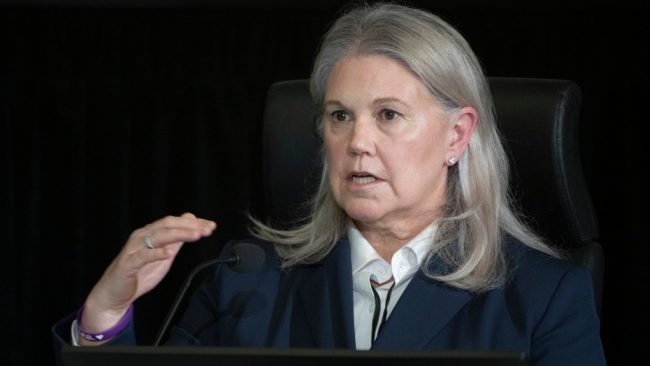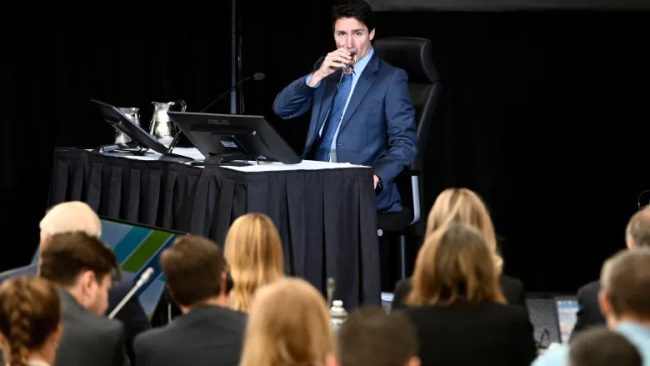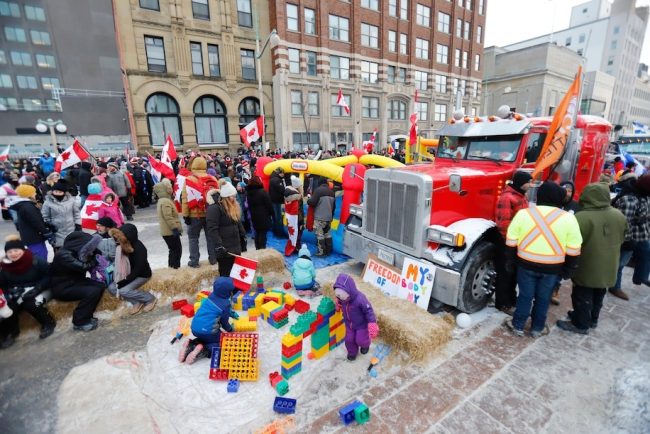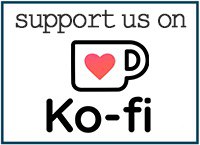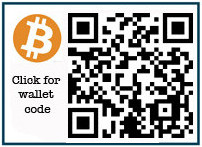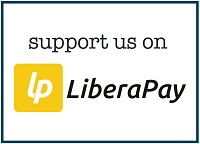Ray McGinnis
Canada’s Liberal government couldn’t justify invoking the Emergencies Act based on the existing definition in the legislation. So, it obtained a legal opinion to embellish parameters for declaring an emergency.
The 1988 Emergencies Act states that a “Public Order Emergency means an emergency that arises from threats to the security of Canada and that is so serious as to be a national emergency. As the meaning assigned by Section 2 of the Canadian Security Intelligence Service Act.”
Section 2 of the CSIS Act identifies four tests to signal that the threshold for a threat has been reached. 1) Act of Espionage, 2) Acts of Sabotage, 3) Acts of Serious Violence, and 4) Plot to overthrow the government. A threat may be domestic, like the 1970 FLQ Crisis in Quebec, or foreign.
I flew to Ottawa in mid-November to attend four days of the Public Order Emergency Commission and listen to witnesses testifying under oath. I’d previously written about the Canadian governments’ response to pandemic protests here, here and here.
Emergencies Act definition of Public Order Emergency tied to CSIS Act
Some lawyers at the Public Order Emergency Commission in Ottawa insisted that the bar against invoking the Emergencies Act was rigidly defined and markedly clear. During cross examination many lawyers insisted the definition of what constituted a public order emergency was plain in its language and meaning. The power government is given once it invokes an emergency is sweeping. So, there is no basis for hypothetical or ungrounded ruminations for invoking the Act.
The National Security Advisor to the Prime Minister, Jody Thomas, was appointed on January 11, 2022. This was less than a month before she advised Justin Trudeau to declare a national emergency.
She took the stand on November 17th. Canadian Civil Liberties Association lawyer, Cara Zeibel, asked Thomas, “…you understand that currently the definition of a Public Order Emergency in the Emergencies Act is tied exclusively and exhaustively to the definition in the CSIS Act?” Thomas testified “The Federal Government legal opinion is different, and there will be legal arguments to that end.”
Lawyer for the Justice Centre for Constitutional Freedoms, Rob Kittredge, took Jody Thomas through the CSIS Act tests for declaring an emergency. She confirmed there was no espionage, no sabotage, no foreign interference.
Substituting Serious Violence with Continual Violence
But what about serious violence? Thomas replied: “There was continual violence in the streets of Ottawa…” Kittredge asked her to be specific about what she meant by “continual violence.” Thomas named “harassment, people being followed, people being intimidated, the noise, the pollution…”
Yet, incidents of harassment, stalking, and physical intimidation are matters police address every day across the nation upon receiving a complaint.
I spoke with Freedom Convoy protest leader, Tom Marazzo, who was continually in contact with the Ottawa Police Service Police Liaison Teams (PLTs) during the protests in Ottawa.
Marazzo told me the PLTs would alert him if there was anyone blocking an emergency lane. These needed to be clear, the protest leaders agreed. Though on one occasion it turned out an emergency lane in downtown Ottawa was being blocked by the City of Ottawa’s own equipment vehicles.
Tom Marazzo confirmed that any truck drivers, or any other protesters intimidating or harassing Ottawa citizens would be counterproductive to the aims of the protest. But the Police Liaison Teams never brought to any protest leaders attention any instance of a protester intimidating or harassing local area residents. The disconnect between the rhetoric of protesters being violent and what was happening on the ground was huge.
Eventually, Jody Thomas conceded, “No, not serious violence.” In fact, there were only five arrests for assault between January 29 and February 14, when the Emergency Act was invoked. The Ottawa Police Service has not made public the circumstances of these arrests. It isn’t yet clear that any of the five persons arrested were protesters. Or, if those arrests were just overlapping the protests in downtown Ottawa.
Contrast the lack of “serious violence” in Ottawa in the weeks leading up to invocation of the Emergencies Act on Valentine’s Day with the June 15, 2011, Stanley Cup riots in Vancouver. When the Vancouver Canucks lost the final hockey game to the Boston Bruins, a riot erupted.
Over 15 vehicles and sixty businesses were set on fire. Windows of business were smashed and looted. 140 people were injured, four seriously. 887 charges were brought against 301 suspects, 274 who pled guilty. During the 2022 Freedom Convoy protest in Ottawa, no vehicles were damaged, no windows were smashed, no looting.
Broadening the Definition of ‘Threat’
Considering the lack of serious violence, the National Security Advisor to the Prime Minister, Jody Thomas, quickly reframed matters. She stated, “A Public Order Emergency is broader as defined in the CSIS Act.”
Thomas elaborated, “There’s a range of threats that need to be considered when you’re talking about this country, economic security; the threat of IMVE (ideologically motivated violent extremists); the rhetoric of threats against public figures; the inability to conduct a livelihood in the City of Ottawa — as an example, the Coutts border blockade…; the threat to public institutions and the undermining of the confidence in public institutions.”
Thomas identified “economic security” as a national security threat. In contrast with the cross-border blockades in February 2022, the Liberal government dealt with the 2020 protests with economic impacts differently. From January to mid-March 2020, First Nations protesters variously blocked construction of a BC pipeline, disrupted BC Ferry sailings, shut down CN Rail freight and VIA Rail passenger service for over a month, blockaded an Ontario highway and more.
Through eleven weeks of economic disruptions, Prime Minister Trudeau maintained the importance of engaging in dialogue with protesters to resolve matters.
The Coutts border blockade and arrests of persons in possession of weapons, were addressed by the RCMP under existing Canadian law.
Ottawa Police, Ontario Provincial Police (OPP), RCMP, Canada Border Service Agency and CSIS were pointing away from IMVE threats. CSIS reported on February 14 “Downtown Ottawa…was actually quite festive — not threatening to a passerby.” OPP intelligence officer, Pat Morris provided intelligence for politicians.
In his testimony he noted during the protest in Ottawa the “absolute lack of criminality was conspicuous.” CSIS entered as evidence before the Commission that they “had no concern with IMVEs in Ottawa.”
The most visible expressions of “ideologically motivated violent extremists” in Ottawa included a lone masked protester carrying a Confederate flag, symbolic of the Old South in pre-Civil War America. The other was a lone Nazi flag waver. Both flag-bearers were upsetting to TV news commentators, their viewers and protesters in Ottawa.
But how did the authorities react? It’s been a year. Police and intelligence officials have yet to identify who these individuals were. No police officer approached either flag-bearer and asked them to discuss why they brought these flags to Parliament Hill. No police officer followed either flag-bearer to their vehicle and took down a license plate number. Neither individual was taken in for questioning.
Given the uproar on the part of the Prime Minister and other cabinet ministers who smeared the protesters as Nazis, it only made sense to investigate these flag-bearers. But, instead police and intelligence officials saw nothing to motivate them to question these visible signs of a dark past in either Hitler’s Germany or the old Confederacy south of the Mason-Dixon Line.
The Nazi flag-bearer was often seen walking with their swastika by the Chateau-Laurier Hotel. It happened that the hotel had many guests during the protest who were RCMP officers. The Nazi flag-bearer was walking around in plane sight. But, it seems, Tim Horton’s donuts were more of a priority.
Jody Thomas worried about the “rhetoric of threats against public officials.” I’ve been in contact previously with protester Daniel Bulford, who in his former work as an RCMP officer provided security protection for the Prime Minister. Along with former Newfoundland and Labrador premier Brian Peckford, both confirmed in June 2021, no one involved in the convoy protests had been charged, or faced legal action for uttering death threats against the Prime Minister. This remains the case as of this writing.
Undermining Confidence in Public Institutions
Thomas mentioned “undermining of the confidence in public institutions” as a threat to national security. Ironically, by presenting its public health measures as unassailable and infallible, the Liberal government was undermining citizen confidence in public health.
Did it not occur to Jody Thomas or Chief Public Health Officer of Canada, Dr. Theresa Tam, or Minister of Health, the Honorable Jean-Yves Duclos, that Canadians could read? That many Canadians have computers and TV sets and can obtain other media reports from around the globe?
That Canadians could read national media reports that when asked in January 2022 by the House of Commons Health Committee, “Neither Health Minister Jean-Yves Duclos nor Chief Public Health Officer Dr. Theresa Tam were able to provide any data about COVID-19 and truck drivers.”
On March 4, 2020, the BBC reported “Coronavirus: Face mask ads banned for ‘misleading’ claims.” The story explained Public Health England was advising the use of face masks did little to stop the spread of Covid-19. “…there was very little evidence of widespread benefit from their use outside of clinical settings.”
Canadians reading the New York Times or watching CNN learned on February 29, 2020, the United States Surgeon General was explicit. “Seriously people. STOP BUYING MASKS! They are NOT effective in preventing general public from catching #Coronavirus…”
But, policy reversals with no scientific support were made subsequently with no debate allowed. And in June 2022, NBC reported about a New England Journal of Medicine study that concluded natural immunity offered greater covid protection than vaccines.
Yet, crickets from the Liberal government and public health authorities from coast to coast.
How could “undermining of the confidence in public institutions” have been better achieved than locking down the nation for months at a time. According to a Johns Hopkins study published at the end of January 2022, the lockdowns, school closures, border closures, and limited gatherings, only reduced deaths from Covid-19 by 0.2 percent.
Meanwhile, the economic fortunes of many Canadians were devastated. Yet, the Clerk of the Privy Council, Janice Charette, charged that the Freedom Convoy protests were uniquely a threat to the “economic fortunes” of Canadians.
During Jody Thomas’ testimony, she was reminded of her own briefing notes for a February 13 meeting that “City of Ottawa announced agreement with protest leader (Tamara Lich) that could lead to approx. 70 percent of trucks and cars [leaving] the residential areas in the downtown core over the next 24 hours…”
By noon, February 14, as Serge Arpin, City of Ottawa Chief of Staff to the Mayor, testified, 102 protest vehicles had been moved out of a four block by five block area in downtown Ottawa. The protesters were on schedule to remove 75 percent of the vehicles from downtown Ottawa, and leave the city by February 16. Remaining vehicles were to be confined to Wellington Street along Parliament Hill.
Under testimony, Kim Ayotte, General Manager of Emergency and Protective Services with the City of Ottawa, confirmed that the movement of vehicles onto Wellington Street “got stopped by police.”
Movement out of downtown Ottawa away from the city, or onto Wellington Street was not blocked or abandoned by the protesters. It was the police who blocked the movement of protest vehicles. Consider, many politicians asserted the need to invoke the Emergencies Act in order to compel tow-truck drivers to tow protest vehicles away from Ottawa.
Yet, the need for tow-trucks would have been moot, IF the police – prodded by the Federal Government – hadn’t prevented the voluntary departure of protest vehicles from Ottawa.
As Freedom Convoy lawyer Brendan Miller pointed out, “the difficulty in moving individuals (protest vehicles) to Wellington Street after the agreement (between the protesters and City of Ottawa) was announced…was only stopped because the police wouldn’t let them on to Wellington and because the police then also stopped them from leaving the streets they were parked on…”
By the weekend of February 11 to 13, the protest leaders still had faith in the public institution of government. As Freedom Convoy lawyer Keith Wilson testified before the Commission, the protest leaders were eager to see the agreement with the City of Ottawa succeed. Wilson stated, “it was focus (of) the protest now on the federal government.”
And after the protesters had removed 75% of the protest vehicles from Ottawa, it was anticipated that:
the federal government would be encouraged by the fact that the truckers proved to be honest brokers, and that would lead to a meeting with some federal ministers. There was not a strong desire to have a meeting with the prime minister. It was more with the ministers, and that we could agree on a process of formally presenting briefs and information and scientific information to support — and comparative information, because Canada was (an) anomaly at this time in terms of our mandates; the other G7 countries weren’t doing these things — to try and persuade the government to review its policies.”
Keith Wilson was asked if he was concerned about suggesting that protesters still come to Parliament Hill after the Emergencies Act was invoked on February 14, 2022. Wilson replied, “No, because I’m a Canadian and I never imagined that our government, our federal government, would use that level of force against non-violent, peaceful Canadians.”
Numbers of cabinet ministers and senior bureaucrats testifying before the Commission complained about ongoing congestion on Wellington Street, had the protesters been allowed to remain. This was also trotted out as a basis for invoking the Emergencies Act. Yet, Wellington Street has been continually blocked off as a traffic route by the government ever since the Emergencies Act was passed.
During the week I attended hearings at the Commission, I walked from my hotel to the Library and Archives Canada building along snowy Wellington Street in mid-November. The blockaded street was a reminder that something is terribly wrong when politicians complain a street is blocked by a protest, and then block the street to all traffic for the next twelve calendar months.
Threats to National Security and a Secret Legal Opinion
However, the Liberals, on a legal opinion to expand the definition of threat, invoked the Emergencies Act. Asked about the basis for the legal opinion, Justice Minister, David Lametti, testified “For reasons of solicitor-client privilege (he) could not describe the various kinds of legal analysis relied upon by cabinet.”
Justice Rouleau told Lametti that by taking this position the government is asking Canadians to “just assume (it) acted in good faith,” to just “trust us.” Asked if he agreed “that Section 2 of the CSIS Act has a different meaning…a different scope based in its reference in the Emergencies Act,” Lametti responded “I will neither confirm nor deny that.”
In addition to David Lametti and Jody Thomas, another official who recommended the Prime Minister invoke the Emergencies Act was Janice Charette. She was named as the Interim Clerk of the Privy Council in March of 2021, and was confirmed in the roll as Clerk of the Privy Council in May 2022, three months after the Ottawa protests. She had a B.A. in Commerce and served in a number of capacities as Deputy Minister of Human Resources, DM for Immigration, and DM of Health Canada. Charette had no background in national security.
She said under oath, “I’m not an expert in any of these domains. My assessment from a layman’s point of view was it (the protest) was not legal.”
Ms Charette fretted that the government “didn’t really have a full 360-degree view” of the protest. Though she urged those with her at the Incident Response Group (IRG) to “really think outside the box,” this didn’t include arranging a meeting with some of the protest leaders.
Tom Marazzo, and other protest leaders, had been seeking a meeting with some government officials since early February. But the government declined to take advantage of having a meeting with a group of protest leaders to help gain a 360-degree view of the facts on the ground.
Protest leaders were constructively meeting with Ottawa Police Service Police Liaison Teams to keep emergency lanes clear. They were meeting with City of Ottawa staff to remove protest vehicles.
Yet, federal Liberals agonized that they didn’t know who they could talk to among the protest leaders. Starting with those the Ottawa Police Service and the City of Ottawa were already engaged would be an obvious place to start. But this wasn’t a first step Trudeau’s government was willing to risk taking.
Pre-emptive Invocation of State of Emergency
Deputy Clerk of the Privy Council, and Associate Secretary to the Cabinet, Nathalie Drouin, explained one of the reasons the Prime Minister was advised to invoke the Emergencies Act.
We “couldn’t wait to invoke the Emergencies Act because then it would have been a national security threat.” By waiting any longer, Drouin explained, “We would have been in a situation where the threat would have materialized.” By underscoring her panicked reasoning, Drouin made clear no threat to national security had actually materialized. Asked about the definition of “threat” in the Emergencies Act, Drouin stated a “meaning can have different meanings at the end.”
Drouin took part in Justin Trudeau’s phone calls with the First Ministers of the Canadian provinces and territories. She stated she was aware of opposition by a majority of provincial premiers, “that there is a risk that invoking the Emergencies Act can inflamate [sic[ the situation.”
Janice Charette was shown one of her responses in a memo prior to declaring the Emergencies Act. In the memo she stated “In our view, this fits within the statutory parameters of the Emergencies Act, but this conclusion may be vulnerable to challenge.”
The Emergencies Act states that it is to be a measure “of last resort” when all other options under the laws of the land are exhausted. And not all other options had been exhausted, according to the Ottawa Police Service who had signed off on a detailed 73-page plan with the RCMP and Ontario Provincial Police to de-escalate the protest.
Prime Minister Trudeau referred to a “so-called plan.” When shown the document of the plan, Trudeau stated he had never seen the plan. Nonetheless, he asserted he had “no confidence” in the plan.
Indigenous Among Us
In his public statements, Prime Minister Trudeau described the protesters as racists and white supremacists. But this would have come as a surprise to indigenous protesters like Noeline Villebrun, a clan mother from Yellowknife (NWT), and Sandra MacKenzie, a clan mother from the Sucker Creek Treaty 8 in Alberta.
Both were among numbers of indigenous protesters who attended the Commission hearings in person. On the day Justin Trudeau testified, seated in the audience was Candice Sero, the Mohawk woman with a walker who was trampled by police on horseback.
During the proceedings three lawyers representing the Union of British Columbia Indian Chiefs took part in cross-examination of some of the 76 witnesses appearing under oath.
Fungible Threat
By expanding the definition of a threat to national security, Justin Trudeau invoked the Emergencies Act making “threat” fungible. The Canadian government couldn’t afford to have the City of Ottawa and the protesters complete removal of 75 percent of protest vehicles from the city. It would make the protesters seem too reasonable. It would call into question the governments rhetoric about Freedom Convoy protesters being a gang of “terrorists” and “mercenaries” plotting insurrection to topple a democratically elected government.
Janice Charette explained that she was learning a lot about what was happening at the Freedom Convoy protest in Ottawa by “watching what was happening on our television screens.”
By early afternoon, on February 14, the Ontario Provincial Police reported the protest at Parliament Hill and downtown Ottawa was “calm, festive and family oriented.” Margaret Hope-Braun, a mother of two from Peterborough, Ontario, was at the protest on Valentine’s Day.
During her testimony before the Commission, she recalled:
I witnessed hundreds of roses being offered to the police officers. There was a lot of love. There was a lot of trying to heal the divide…being created between us and the police. …the streets of Ottawa were covered in roses that day.”
By noon, 102 protest vehicles had been moved from downtown Ottawa, as protest leaders showed themselves to be honest brokers following through with their agreement with the City of Ottawa. And then Justin Trudeau invoked the Emergencies Act.
Though the Emergencies Act was invoked on February 14, and the Liberal-NDP coalition voted for its passage on February 22, the Act was revoked on February 23. Janice Charette explained she advised the Prime Minister to revoke the Act. A number of “indicators” had helped meet the governments objectives.
There has been “a significant decrease in the number of minors” (children and youth) involved in the protests in downtown Ottawa since February 14th. And it was judged that “…freezing of (bank) accounts has been assessed as having had a deterrent effect…” Just the same, Charette cautioned that at the time the Act was revoked “everything (was not) unicorns and rainbows.”
As Freedom Convoy lawyer, Keith Wilson, noted it is still – to use the Clerk of the Privy Council’s phrase – not “unicorns and rainbows” for protesters who had their bank accounts frozen.
In his testimony on November 2, 2022, Wilson said protesters who have had their “accounts were frozen have been denied credit applications, and I have explained to my clients and others who contacted me that the Canadian Bankers’ Association representative who testified before the House (of Commons) Committee said that each of these persons will have their accounts — their names marked — flagged for life.”
Preventing Abuse of Executive Powers
Near the end of his cross-examination of Janice Charette, Canadian Constitutional Foundation lawyer Sujit Choudry learned from her that CSIS Director David Vigneault was not asked to speak during the full cabinet meeting of February 13 regarding the necessity to invoke the Emergencies Act. Choudry said to Janice Charette,
I would like to put this point to you. …in a constitutional democracy, to prevent the abuse of executive powers by an elected government, it is imperative that the views of a professional non-partisan and expert security services be front and center and that they not just be a factor, but that they be at the core of whether a government decides to invoke emergency powers.”
Nathalie Drouin jumped in, responding to Choudry’s point by stressing other threats to the nation: “We saw kids, you know, being used as (human) shields.” Children were sitting with their parents in their trucks to keep warm. “Kids” were playing in “bouncy castles,” a horrified Jody Thomas added to the growing federal case.
Children were making snow sculptures. Children and youth were playing hockey on Wellington Street, just across from the Parliament buildings. As the police observed, on February 14 the protest was “calm, festive and family oriented.” And as CSIS observed, the protest that day was “not a threat to a passerby.” The protesters, as far as the Trudeau government was concerned, had crossed a line.
In the imaginations of senior government officials, there was a real and present danger.
Nathalie Drouin also advanced as a threat serious enough to warrant invocation of the Emergencies Act the “presence of guns.” In his testimony, Justin Trudeau also cited the “unknown interiors of trucks,” which might contain weapons. But, both the Deputy Clerk of the Privy Council and the Prime Minister should have known that the Ottawa Police confirmed there were no weapons, no guns, among the protest vehicles. And yet, nine months after the protest, Justin Trudeau and Nathalie Drouin were sticking by this disproven allegation.
On February 14, prior to invoking the Emergencies Act, in cross-examination with The Democracy Fund lawyer Alan Honner, Janice Charette confirmed that she told the Prime Minister
There is no current evidence of significant implications by extremist groups or international sponsors.”
Though Government of Canada lawyers had since April 25, 2022 to prepare documents for release at the Commission, they stalled. While I attended the hearings, documents by Government lawyers were being dropped into the computers of other teams of lawyers. Many of these were heavily redacted. Many of these pertained to the roles and decision-making during the protests of witnesses testifying on the stand.
In a normal court proceeding, which the Commission was not bound by, a judge would adjourn. A judge would allow lawyers to review newly disclosed documents and craft questions for witnesses on the stand. But, Government lawyers were hubristically
The Threat of Dialogue
With the lack of tangible threats to the national security of Canada, why was the Trudeau government so intent on declaring a national emergency? What has a government to gain by reaching for a nuclear option like the Emergencies Act with its sweeping powers and abrogation of civil rights?
Back in 2013, when Stephen Harper was Prime Minister, the RCMP arrested a British Columbia couple, John Nutall and Amanda Korody, for attempting to set off three bombs on the grounds of the provincial legislature on July 1, Canada Day. They “were befriended in early 2013 by an officer pretending to be an Arab businessman with extremist connections. …he encouraged their Islamic militance and introduced them to other Mounties acting to be jihadis.” Over 240 RCMP officers were involved in this exercise of entrapment.
The Vancouver Sun reported that the RCMP “corporal encouraged their extremism…pressing (them) to formulate a viable terrorist plot.” In 2018, the BC Court of Appeals threw out the case and found the RCMP had involved itself in a “travesty of justice.” Without the RCMP cobbling together the plot to bomb the legislature there would have been no plot at all.
So, when no threat exists – as was the case with John Nuttall and Amanda Korody – government authorities tried to create the appearance of an Islamic terrorist threat to scare Canadian citizens. And in the case of the Freedom Convoy, where there was peaceful opposition to the pandemic measures, the government had to invent imagined threats to national security to scare and divide Canadians.
Developments in the United States during the ‘pandemic’ may be instructive. Former JSOC commander Stanley McChrystal’s company McChrystal Group, was charged with handling the Covid challenge in America as a private consultancy. McChrystal was convinced that the fight against the coronavirus must be waged like a war. In April 2020, McChrystal told Forbes magazine that the war must be waged without opposition. Otherwise, it would be a repeat of the failure of Vietnam. As a result, campaigns against disinformation, and deplatforming any dissenting voices began.
Has the Canadian government similar aspirations? British Columbias’ Public Health Officer is Dr. Bonnie Henry. She has previously served for over a decade as a doctor with the Royal Canadian Navy. And the federal governments’ behavioural-insight team, the “Impact and Innovation Unit,” has been employing behavioural scientists to nudge Canadians toward compliance in taking the mRNA vaccines and following pandemic measures.
Could the explanation behind the Trudeau governments’ refusal to have dialogue with Freedom Convoy protesters might not be based on fear of violent insurrectionists? But instead, is the Trudeau government in lockstep with Stanley McChrystal: that the war against Covid-19 must be fought without opposition. Dialogue with Freedom Convoy protesters would be to concede that there might be something to discuss – that government claims weren’t so unassailable after all?
On January 3rd it was announced that Dr. Jordan Peterson faces a mandatory six-month re-education by the Ontario College of Psychologists. Otherwise, he will lose his license to practice, which is – as the OCP should know – just crazy.
Back in mid-February 2022, on social media, Peterson questioned the wisdom of interim Ottawa police Chief Steve Bell. Interim Chief Bell was asserting he was looking into how to remove children from the Freedom Convoy protest site. Peterson commented, “‘Children removed’ how exactly? Why, exactly? By whom, exactly? Sent to where, exactly? And for how long, exactly? Think this through, Canadians. This is a bad decision.”
The New Years’ message the College of Psychologists of Ontario sends not only to Dr. Jordan Peterson, but to all Canadians, is that it is not permitted to question government claims that children at the protests were a threat to national security.
How many on the OCP board are donors to the Liberal Party of Canada? It is not permissible to view children taking part in the Freedom Convoy protest with their parents as a non-threatening activity. The government also explored seizing dogs from protesters, and having their pets put down. Now who’s threatening who?
Justice Paul Rouleau was slated to have his Commission Report to the Liberal cabinet by February 6. They would have had two weeks to get their talking points in place before the report is released to the House of Parliament for opposition MPs to see it on February 20, 2023. But, bowing to political pressure, the Report will now be released to all Members of Parliament on February 20th.
Ray McGinnis is a freelance writer, and author of Unanswered Questions: What the September Eleventh Families Asked and the 9/11 Commission Ignored. He attended Public Order Emergency Commission hearings in Ottawa during mid-November. He lives in Vancouver, Canada.

